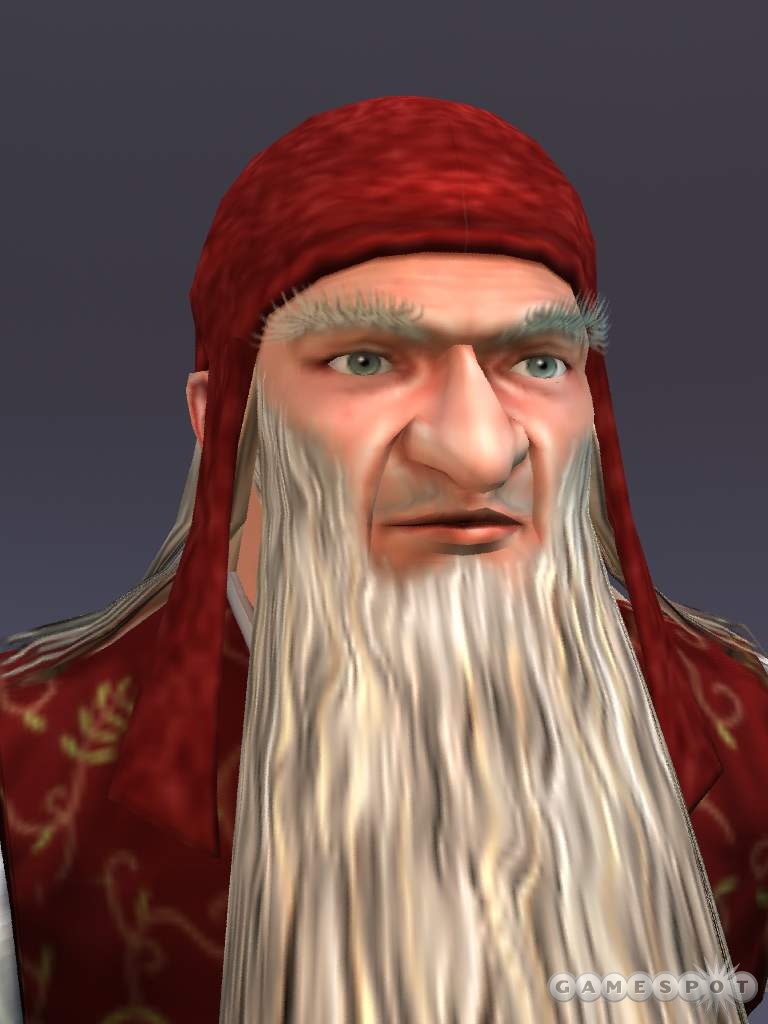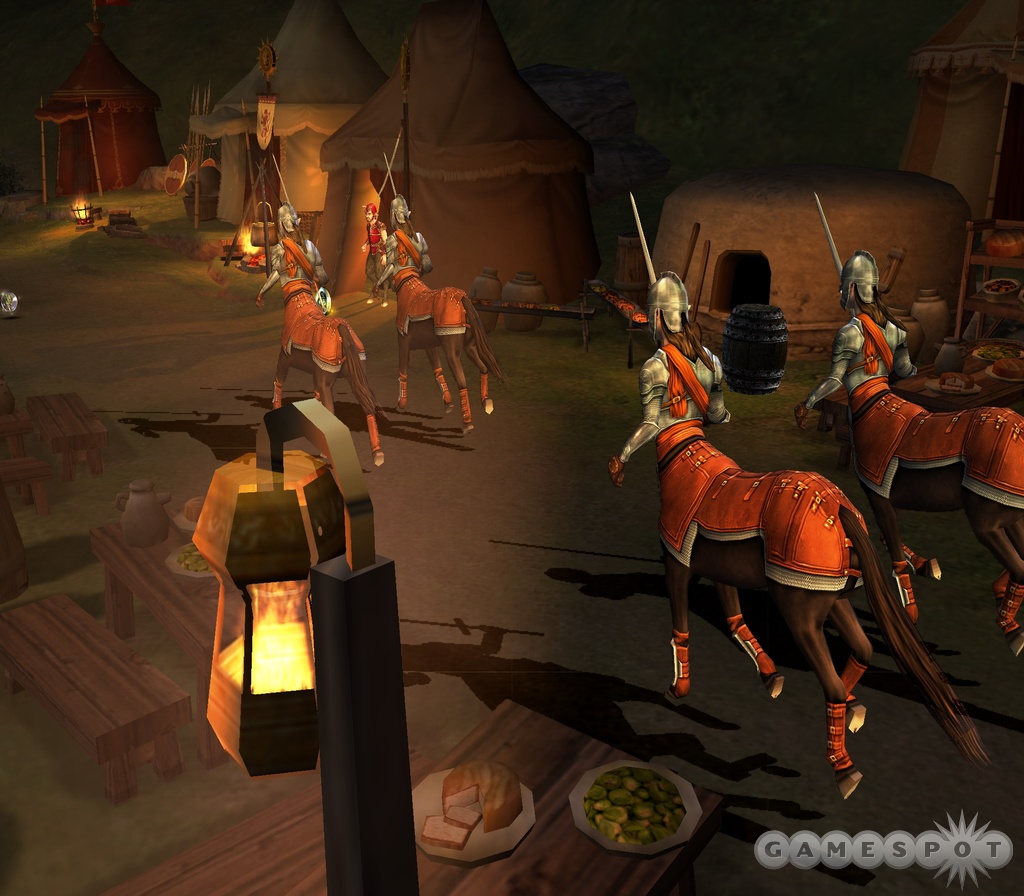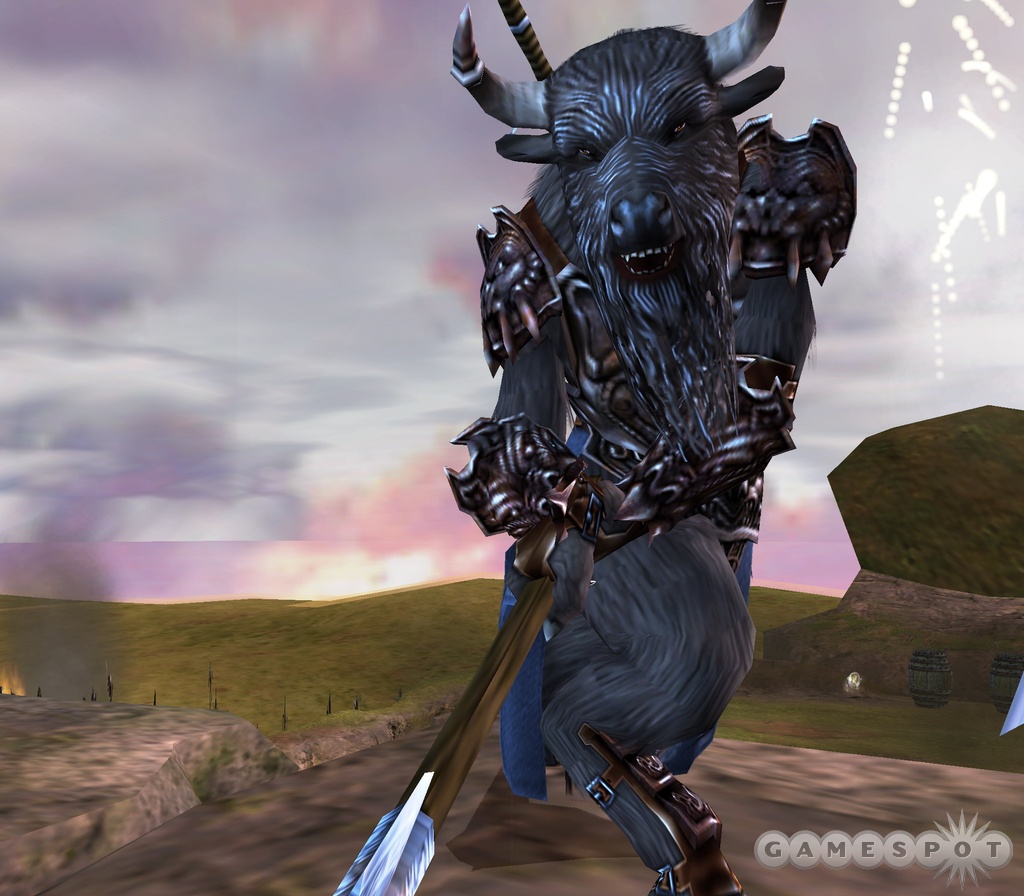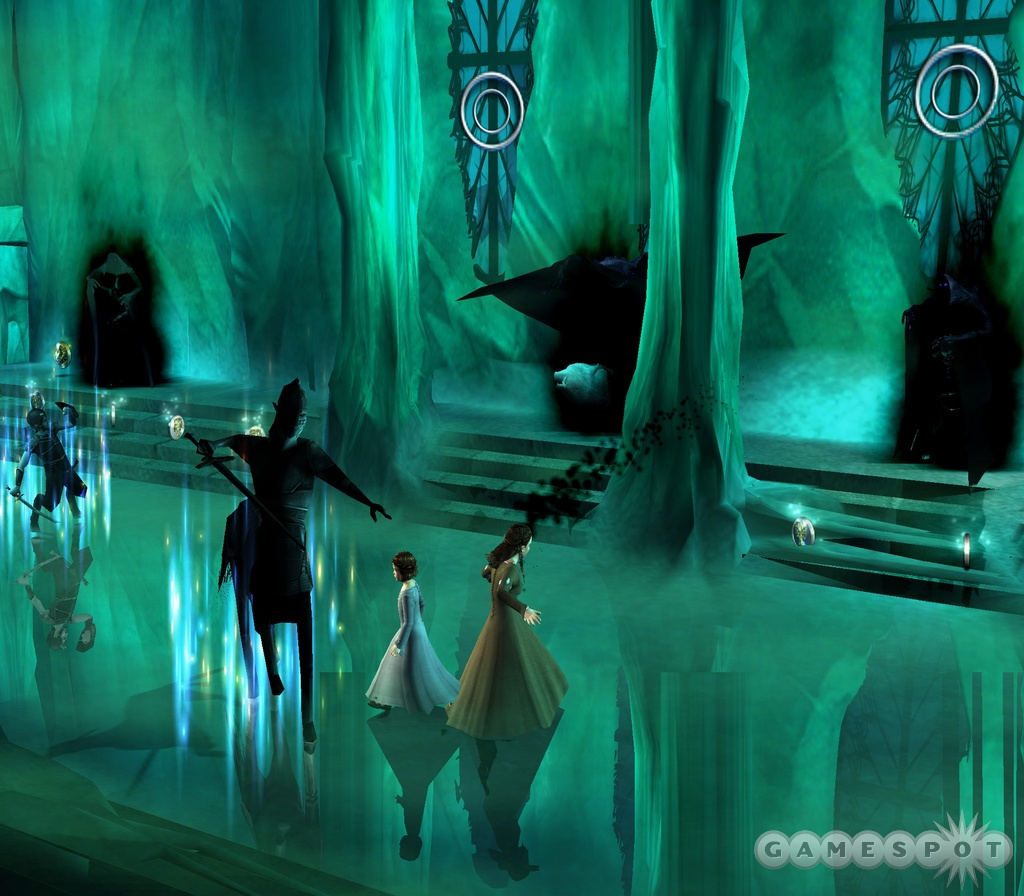The Chronicles of Narnia: The Lion, The Witch and The Wardrobe Designer Diary #2
Andy Burrows gives us an inside look at the people and monsters of the upcoming action game based on C. S. Lewis' children's classic.
The Chronicles of Narnia: The Lion, the Witch and The Wardrobe promises to be one of this holiday season's most epic fantasy films, especially given the involvement of Weta, the special effects house that brought The Lord of the Rings to such stunning life on the silver screen. Here to tell us about the process of bringing Narnia's people and monsters to the game-based-on-the-film is associate producer Andy Burrows.
Developing the Characters
By Andy Burrows, Associate ProducerThe Lion, The Witch and The Wardrobe features some of the most loved characters in children's literature. We're not just talking about Peter, Susan, Edmund, and Lucy here, but also Mr. Tumnus, the White Witch, Mr. and Mrs. Beaver, the Professor, and, of course, Aslan. And who can forget Father Christmas?
In a world where these and all the other characters are as richly drawn as in the land of Narnia, clearly one of the great development challenges is to ensure these personalities come alive within the video game. The connections between player and game character are vital, and the entire game must enhance these relationships at every opportunity.
So when it came to defining the attributes of each character, this approach was foremost in our minds. Respecting such a well-loved story meant taking care to build technologies that would enable the individual strengths (and weaknesses) to shine. Each of the four Pevensie children was designed with differing abilities--a feature that would underpin the gaming experience and lead to some exciting possibilities farther down the line. These abilities help mark out unique playing styles for each of the children. When, for example, the children are faced with deep snowdrifts that would impede their progress, it falls to Peter to use his height and strength by giving Lucy a piggyback. Not only do we have a thoughtful and logical addition to the gameplay, but also we strengthen the relationship between Peter and Lucy. It is a charming addition to the character development, and it helps us believe in the world, just as we have come to do with the books.
It's worth enjoying some of skills and attributes the children show throughout the game in order to understand how much detail is being placed into the game.
Peter, of course, is the eldest and strongest (can you see Edmund wanting to help Lucy through the snowstorm?). He may be unarmed at the start of the game, but you can be sure that he will find objects around to help him be a brave and stalwart brother. When Peter receives a special sword from Father Christmas, you know the action has become even more serious.

Susan is the second-eldest child and is equipped with the ability to use ranged weapons, such as snowballs and the special bow given to her by Father Christmas. While her ivory horn gift becomes invaluable in calling for help, it is her ability to use Mr. Tumnus' panpipes to send creatures to sleep that shows us just how adaptable this young woman is.
Edmund follows next, and he proves to be the most agile of the children. He can fight, of course, but it is this agility that comes in useful throughout the game--especially when he starts to redeem himself.
Finally there is Lucy, the trusting soul through whom we first see Narnia in the book, and who proves to be as fierce and determined as any of the White Witch's minions. Lucy has the ability to heal her brothers and sister even before she receives the wonderful fire-flower cordial from Father Christmas. Her hardy spirit gets release through the little dagger and the skill of climbing on top of the wolves (among others) and controlling them while they do their best to shake her off. These are skills as exciting as they are useful--picked for the pleasure they bring to the narrative above anything else.
Of course, all the abilities in the world would not enhance the gameplay if the control method was put beyond the reach of most gamers. It is here where the game excels, once again, by following a tried, tested, and much-trusted formula of never letting the mechanics get in the way of the game. Selecting which character to use is a matter of pressing one button to cycle through each of the available children. Even using special abilities is as intuitive as can be. Pushing an object requires only one press of the button to grab it, while some actions occur by being in the right place at the right time. So if you are carrying a stick and move near a fire... Hey presto! It bursts into flame, giving you a useful torch with which to proceed deeper into... Well, that would be giving away too much.
The point of all this, of course, is to let the people and places of Narnia live. If we are to believe in the laws of Narnia, then nothing should stand in our way as we immerse ourselves in the plight and hopes of four ordinary children.
The Lion, The Witch and The Wardrobe encourages this approach by taking advantage of the best in artificial intelligence. All of the Witch's minions are as diverse as the children, because the AI in the game bestows abilities, fears, and tendencies upon each of them. It's an individual approach that makes the black dwarves such challenging opponents as they keep back from the fray and fire arrows. Minotaurs will stomp in to combat and display distinctively "minotaur" behavior as they use their horns and skulls to knock the children over. Of course, there are many such creatures. Enormous giants, fast-and-dangerous ankle-slicers, howling werewolves, and the impervious cyclops are just further examples to excite the imagination.

The AI doesn't stop there, either, as even the children come under its magical spell when not being directly controlled. It is here that we see the strengths of the Pevensies working together to overcome even the seemingly insurmountable situations.
Special abilities, interactive environments, strong personalities, and armies of strange and magical creatures form the backbone of an experience that rests in the hands of the player. Our humanity, our ability to share and respond in the imagination of others, will take the game beyond this world. Nowhere is this more evident than when playing in two-player mode. Here the game allows a second player to dip in and out, helping the first player when required or simply engaging in the action for the sheer pleasure of working cooperatively to solve the puzzles and defeat the White Witch's chilling rule. In a world where four children can become kings and queens, it seems somehow fitting that we too can follow a similar destiny.
Developing the Creatures
In these pages we have discussed the approach of making "the game of the movie," with all the advantages of world building and character portrayals that involves. Not only does this approach give people the chance to experience the events of the movie, but also it goes further by giving them the chance to revel in those events and play the movie from a different perspective. Key to this achievement lies in the development of our characters, playable and nonplayable alike.
And so we move on to the next part of our diary: the creatures of Narnia--as interesting and worthwhile a topic as anything else (and one that will reveal the depth of detail within the game).

By featuring all of the creatures and characters of the film, the game enhances the richness of Narnia and enables the player to go toe-to-toe with the many denizens of that wintry world. Whether on the side of the White Witch or Aslan, this populous potential is the lifeblood of the game, as surely as our principal characters are its heart. Each creature in the game is a faithful re-creation of its big-screen counterpart, right down to the last tusk and nail. That means the evil creatures will be almost as menacing as the White Witch, while the good creatures will be as noble and brave as Aslan. Where the game goes further than the film is in giving each and every one of these creatures its own individual traits.
Let's quickly run through some of the various "minions" and "followers," and then we'll draw it all together with an overview of how they all work to help or hinder.
The Minions
All evil creatures must be called minions. Pressed into service, they represent the worst of all character traits. And our evil creatures are no exception. Wolves are the most common (if not the lowest) of the creature population, and they act as spies and guards for the White Witch. They dog the heels of our Pevensie children at speeds that can surprise an unwary traveler. Wolves do not represent a major challenge, unless they happen to be of the grey wolf variant, a much more ferocious opponent that only Peter has the strength to overcome.
Ghouls skulk and slither through our land of Narnia with all the slyness expected of such creatures. Their skinny frames are punctured by sharp teeth and narrow eyes, and they wield long polearms with which they attack from a distance. In one-on-one combat, ghouls are easily defeated, but their true strength lies in being able to surprise the enemy with their agile movements. Climbing and swimming give them unique abilities when launching surprise attacks.
The tough, lumbering ogres wield enormous wooden clubs and tower over the children with frightening effect. The ogre's great strength is at its most evident when you witness one lifting a huge boulder. We wouldn't recommend that you stay around to see it being hurled in your direction, despite the ogre's legendary stupidity. It will take teamwork, something the game brings in time and again, to defeat such a creature.
On the subject of boulders being dropped from great heights, we find one more creature terrorizing the children. This time it is the harpy--and its vicious claws that hold the deadly rocks. These malicious winged creatures attack from the relative safety of the air, as they are especially vulnerable on the ground.

Also keeping an eye out (we're sorry) for children is the cyclops. Far more formidable even than the ogre, the cyclops wears tough metal armor and wields a fearsome axe. No amount of hacking and stabbing from the Pevensie children can affect the tough hide, so teamwork and ingenuity are the only effective weapons.
While the cyclops is often used to lead the armies of the White Witch in to battle, it is the fabled minotaur that takes center stage when it comes to outright danger levels. The minotaur, part bull, part human, is the most dangerous soldier in the White Witch's army. Its sheer size, its numbers, and the utter ferocity of its attacks are matched by the absolute nastiness of its weaponry. Flails and kopesh swords work alongside the sharp (very sharp), curved horns on its head as the minotaur combines attacks to intimidating effect, such as slashing from side to side with a sword before leaping forward to gouge with its horns. This fearsome attack and the minotaur's thick armor must be broken before the beast can be defeated.
And, yes, it is up to the children to defeat the minotaur.
The Noble Followers
All is not lost, however: as the great and good Aslan has his noble followers to help even the battle. We have, of course, included the indomitable Mr. and Mrs. Beaver, who, despite not being on everyone's list of creatures to recruit for a battle, prove invaluable in escaping the White Witch's pursuing wolves and in finding Aslan. The Beavers have access to a large network of hideaways and holes across Narnia--handy when you need to escape or fancy your chances at finding hidden treasure.

The crafty Mr. Fox is often mistaken for a minion of the White Witch. In reality (well, our reality), he is one of the creatures that remained loyal to Aslan throughout the cold winter of the White Witch's rule. Like all foxes in Narnia, Mr. Fox is not only crafty and intelligent, but also skillful at turning awkward situations to his favor.
The rich vein of Greek mythology provides the source of many creatures in Narnia, and the faun is no exception. While Mr. Tumnus remains the most famous of fauns, the race as a whole has managed to remain loyal to the cause of good. Fauns are capable of using their love of music to conjure up beautiful and enchanting melodies.
Closely related to the faun is the satyr, which is even more goatlike than its cousin. As a result, it's stockier and stronger and forms a brave and stalwart part of Aslan's army.
The awe-inspiring presence of the centaurs is a valuable addition to Aslan's army. Part human, part horse, the centaur is formidable in battle. The males will use their sharp swords and hooves to defeat their opponents, while the females of the species will employ their considerable talents as archers to fend off any who would harm Narnia and its people.
Of course, even such a cast of magnificent, noble, or terrifying creatures would not make the game, even if it perfectly matched the creatures of the movie. More work had to be put into creating creatures with special abilities that add something to the overall flow of the game. For example, Mr. Beaver will help the Pevensie children get past a wooden obstacle by gnawing his way through it--a fine way of showing off such splendid teeth. Other creatures are also guided (in the way they interact) by their own abilities. Minotaurs and minoboars know to lower their heads during an attack so as to make use of their deadly horns; goblins know well enough how to lurk in the shadows before ambushing players; and dwarfs... Well, Dwarfs are skillful archers who can be dangerous at any range.

It all helps increase the levels of realism in the game, as well as heightens our involvement with the land of Narnia right from the start, when the balance seems to be hopelessly in favor of evil--and when all who remain loyal to Aslan live either in constant fear or reside as statues in the castle of the White Witch. Guiding the Pevensie children through the trials of their journey becomes an emotional story as this balance shifts over time. From trying merely to escape pursuit, to exploring the darkest dungeons, to then ultimately engaging in the major confrontation between Aslan and the White Witch, the player will need to call upon every aspect of his or her ability--as well as know every aspect of his or her opponent--before being able to (hopefully) emerge victorious.
Got a news tip or want to contact us directly? Email news@gamespot.com
Join the conversation